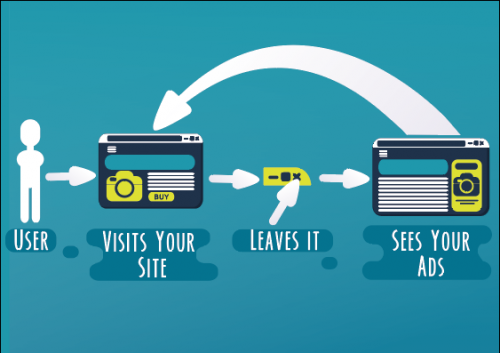Are you looking to boost your conversion rate and optimize your lead generation strategy? If your answer is yes, it’s time to take up remarketing. But what is remarketing, you ask. How does it work? How can I benefit? Read on to discover the answers you need.
Also known as retargeting, remarketing targets users who have already visited your website and checked out your products. We call these consumers “potential customers,” since they’ve shown a previous interest in your offers. And with remarketing, you can improve the chances they’ll convert and make a purchase.
The technique is based on customized ad campaigns. You have almost certainly seen those little ads that pop up while you’re browsing websites. This is remarketing! Google Ads is another very popular remarketing tool. You’re about to learn more. But the most important thing to remember is that remarketing is simple. With the right strategy, you will gradually lead users who know your brand into the conversion tunnel. The trick is to keep reminding them of your existence.
 Why does it matter?
Why does it matter?
These days, 70 to 90% of visitors leave websites before they make contact or purchase a product. And as you’ll agree, that’s a lot. The reasons can be diverse. Not enough time to complete the sale. They want to think it over. Often it takes two or even four visits before a potential customer will get in touch with you or make a purchase decision.
And out of the 72% of Internet users who abandon the buying process, only 8% return to the site to complete their purchase.
That’s where remarketing comes in. Your goal is to keep your brand top of mind for visitors who have shown an interest in your products and services. You want them to know you’re still here when they’re finally ready to decide. Remarketing is known to bring 26% of lost customers back to make contact or finalize a sale.
Why is it worth it?
Both the numbers and marketing specialists confirm that remarketing is just as and perhaps even more effective than Internet searches, emails and other display media.
Consumers also tend to respond positively to this type of advertising. 30% of consumers have a positive or very positive reaction to remarketing, while only 11% have a negative opinion on the topic.
The click-rate for remarketing ads tends to be on average 10 times higher than for traditional ads.
And compared to other investment strategies, remarketing has generated the largest increase in searches for company names, with some surveys showing a rise of 1 046%.
How does it work?
As soon as a user lands on your site, they are labelled with a “cookie” and then indexed on your remarketing list. All users who are part of this list will become potential recipients of targeted ads.
Let’s take the example of Google Ads! The Google Display Network has a number of partner sites where your visitors are likely to go and where your campaigns will appear.
Here’s a simple example:

1/ You visit X’s moving site. You do a sample estimate and then leave.
Cookies will track your visit.
2/ You then go to Y’s news site that belongs to the Google Display Network.
Company X has already set up a remarketing campaign that targets people who got as far as the quote request stage.
3/ So on Company Y’s site, you see a Company X ad that’s urging you to come back and get in touch.
Does that make sense?
There are many other types of ads, adapted to your audience, type of products and services, and desired message:
- YouTube Videos
- Banner Ads
- Search Engine
So how do I create a remarketing campaign?
If you’re already familiar with Google Ads, it’s not too complicated. But as with more traditional ad campaigns, there are several criteria to consider.
Steps to Follow
First off, you need to get a Google Ads account to get your remarketing tag.
Next, add this tag to all of your website pages.
Make sure that all the information linked to this tag lets you identify user behaviour and interests, without violating user consent rules.
Create one or several remarketing lists based on user profiles and what they do on your site. Do they visit one page or all of them? Do they look at your products? Add them to their shopping carts? Buy your products? Keep them in their shopping cart without buying anything? Adapt your remarketing lists to your goals.
Start with your list and customize your ad by including parameters like a specific location or language.
You need several versions of your ad with relevant and interesting information.
And there you go, your ad campaign is ready!
A Few Best Practices
Remarketing revolves around your users, their experience and interest. But make sure you don’t go overboard.
- Carefully manage the frequency of your ads
- Optimize your ads and customize them as much as you can (Create several lists)
- You should also list your current customers and boost their loyalty by offering them promotions and discounts
- Regularly evaluate your strategy to remedy or strengthen your different options
To reach your goals, consider all the possibilities. Remarketing can be adapted to all situations, products, services and users. There are no restrictions in terms of languages or geographical regions. It’s an effective conversion strategy that lets you target your potential customers in a personalized way.
What goals can I achieve through remarketing?
- Brand Awareness
- Social Engagement
- Increased Sales
- Customer Loyalty
- Lead Generation
- Additional Sales
- Community
- Lead Maturation
Now that you’ve learned about your options for boosting your marketing strategy, it’s time to get started!


